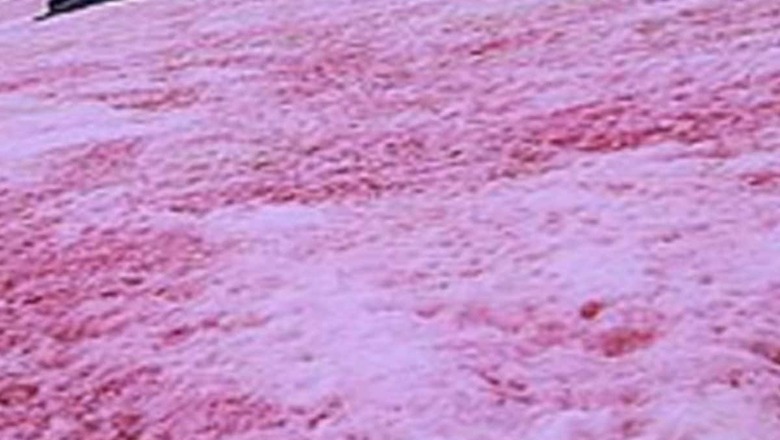
views
In the summer, the peaks of Rocky Mountain in Canada and the USA develop a light pink hue, thanks to the presence of ‘chlamydomonas nivalis’, microalgae found in alpine and polar regions. Now a recent study has shown that these red-pigmented algae blooms contribute to glacial melt. This study was based on 6,100 satellite images of glaciers, taken between 2019 and 2022. Researcher Lynne Quarmby, who is the lead author of this study, told CBC News that the study’s findings serve as a warning about climate change. She said, “We set out on this study to look at the impact of climate change on these blooms and their impact on climate change. And I think the impact of climate change on them is clear and dramatic.”
The pink-coloured snow algae develop when water is released from the melting snow. The algae uses photosynthesis to grow and act as a carbon sink by absorbing carbon dioxide from the atmosphere. Since the algae darkens the surface of the snow peaks, the snow becomes less reflective against the sunlight. As a result, the snow begins to melt faster.
This creates a “positive feedback loop” in which the algae keeps growing by feeding on freshwater released by the snow and the snow keeps melting by the increased presence of the algae.
In their study, Quarmby and her fellow Simon Fraser University colleague Casey Engstrom found that between 2019 and 2022, “red snow covered more than 4,214 square kilometres of glacier landscape, equivalent to 4.5 per cent of the total study area”. Subsequently, the snow algae were found on 4,552 out of the 8,700 glaciers studied. They estimated that the red snow led to an “average of three centimetres of snow meltwater per season”.
However, melting snow does not necessarily result in algae growth. CBC News reported that in 2020, the ice on glaciers along the Pacific Northwest melted so fast that the algae did not get a chance to grow.
Quarmby theorises that as snow rapidly disappears due to increased temperatures, the algae will also vanish. She explained, “Losing the algae is just an indicator that we’re losing snowpack and glaciers, and these will impact our lives and the lives of lots of other organisms.”
She added, “For me, it’s one more little sadness that we’re losing it. If you see these things under the microscope, they’re spectacular. Even if you see them just on the landscape, it’s awe-inspiring.”




















Comments
0 comment